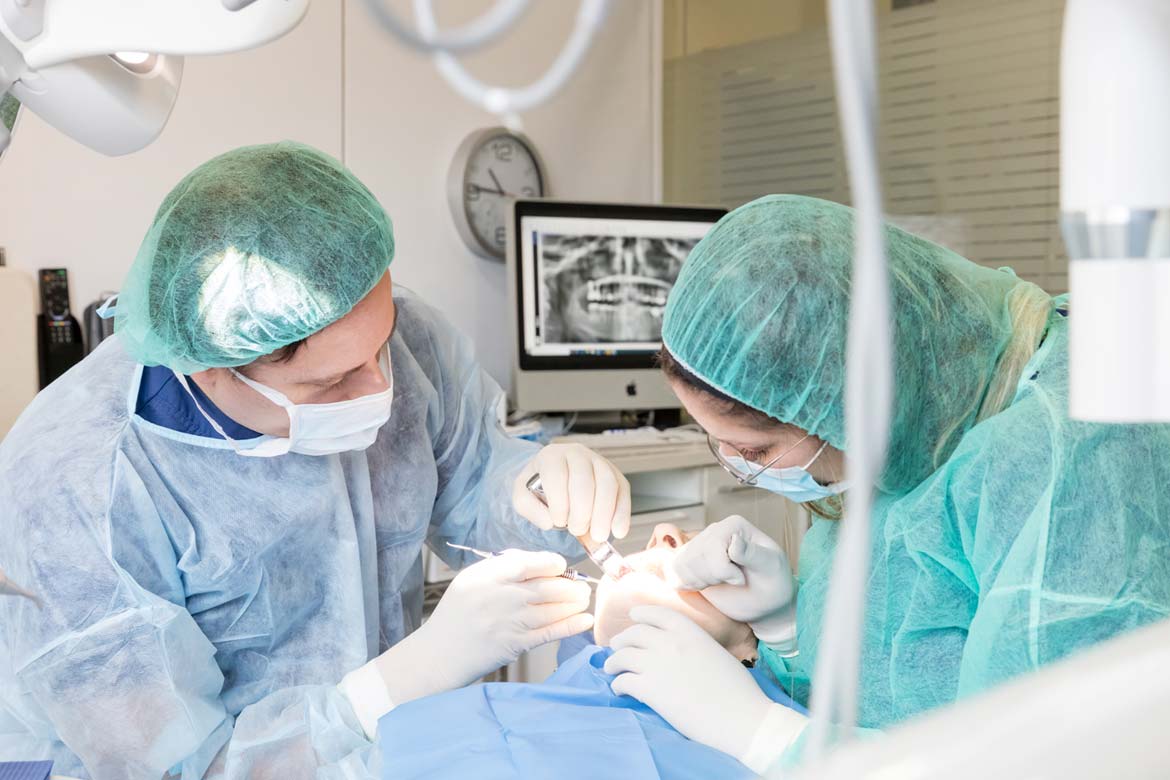Aesthetic Gingivectomy in Mallorca
Treatments to ensure healthy teeth and gums in babies, children and adolescents.
Would you like to contact a specialist in dental aesthetics?
Request an appointment with free examination and diagnosis.
Whether you want to start a treatment or request information, you are in the right place. Leave us your details and we will contact you within three hours.

What is cosmetic gingivectomy?
Cosmetic gingivectomy is a simple surgery that consists of slightly trimming the gum tissue surrounding the tooth, with the aim of uncovering the tooth and achieving a greater visible proportion of the tooth. Visually, the gum appears smaller than the tooth, resulting in a more aesthetic and harmonious smile.
When is an aesthetic gingivectomy recommended?
There are four scenarios in which a patient may have a predominance of gingiva over tooth. In these cases, cosmetic gingivectomy may be indicated as a stand-alone treatment or as a supplementary technique within a corrective treatment plan.
EPA is an alteration in the eruption of the gums that occurs during the jaw and tooth development stage and ends between the ages of 14 and 16. The consequence of this disorder is an over-covering of the tooth enamel by the gum tissue.
It is also a disorder that is often accompanied by EPA, albeit on a smaller scale and a class II malocclusion or retrognathia. In this case, gingivectomy can improve the appearance of the smile but, in addition, it would be advisable to perform orthognathic surgery to reduce the upper jaw bone, a procedure that is always accompanied by orthodontic treatment, so that both the aesthetics of the smile and the functionality of the teeth can be improved.
Clenching or grinding causes teeth to wear down in the long term, erode. Visually, the teeth start to look smaller and as the wear is irreversible, it is recommended to perform a gingivectomy as well as the placement of aesthetic veneers or dental crowns to protect the remaining teeth. The best option, however, is to prevent this erosion by placing dental splints.
Phases of gingivectomy
Gingivectomy is performed by the periodontist as it is a minor oral surgery technique. The gum specialist carries out a study and diagnosis to determine what excess gum tissue needs to be removed to achieve a harmonious and aesthetic result. Thus, on the day of the intervention, the following steps are carried out:
1. Anaesthesia
In the first phase of the intervention, local anaesthesia is applied to eliminate any pain that may be caused by the surgery. Although this is a minimally invasive procedure, we may encounter patients who feel a great deal of stress or anxiety. In these cases, it is also possible to offer a conscious sedation technique, which allows the patient to remain awake and calm during the surgical process.
2. Surgery
The first surgical phase is the gingivectomy, which consists of an excision of the gum surrounding the tooth to remove part of the gingival tissue. This is followed by a gingivoplasty which, unlike the previous one, is the periodontal surgery that allows the edge of the gum to be remodelled to achieve the desired contour and which is carried out at the same time. This achieves the desired aesthetics, planned prior to the intervention.
3. Postoperative period
Gingivectomy is one of the oral surgeries with the best postoperative period. The slight discomfort that the operation may cause can be alleviated with painkillers. However, you will experience swelling and bruising in the treated area, but this begins to subside after a week. The day after the operation, dental hygiene can be carried out with a surgical brush to break up the blood clots that form at the gingival margin.






